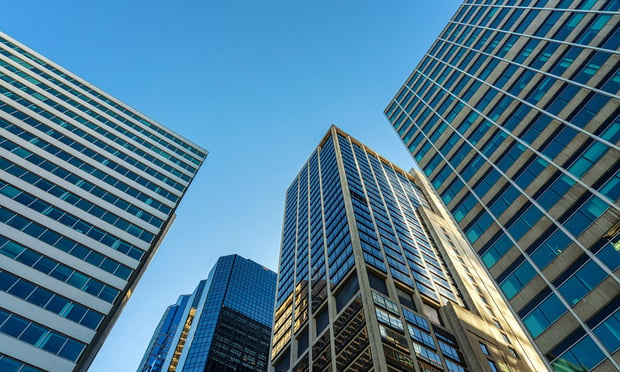But property owners of contiguous space aren't deterred by the rising vacancies and are not lowering rents because large blocks of space remain in demand.
Compounding increases reported in the first and second-quarter, the third-quarter vacancy rate grew by 2.2% in Broward County, 1.8% in Palm Beach County and 1% in Miami-Dade County.
The inventory of Miami-Dade office space increased to 39.6 million sf, up from 39.3 million during the second quarter. The overall vacancy rate increased to 15.2%, up from 14.2% for the second quarter.
Net absorption was a negative 288,973 sf, compared with a negative net absorption of 81,186 sf during the second quarter. The rental rate averaged $27.46 per sf, up from $22.24 per sf.
The inventory of Broward office space increased to 24.5 million sf during the third quarter, up from 23.87 million sf during the second quarter. The overall vacancy rate increased to 16.8%, up from 14.6%. Net absorption was 250,292 sf, compared to a negative net absorption of 266,527 sf during the second quarter. The rental rate averaged $25.44 per sf, up from $21.86 per sf.
Inventory increased to 18.5 million sf in Palm Beach, up from 18.25 million sf during the second quarter. The overall vacancy rate increased to 14.6%, up from 12.8%. Net absorption was 29,177 sf, up from a negative 68,937 sf during the second quarter. The rental rate averaged $27.63 per sf, up from $24.50 per sf.
It's difficult in these times for Peter R. Harrison, Cushman & Wakefield's senior managing director and client services director, to speak optimistically about any aspect of the South Florida office market.
"The only optimistic development I have seen since Sept. 11 is the improvement in the stock market over the last four to five days," Harrison tells GlobeSt.com.
Harrison says the Sept. 11 terrorist attacks "greatly accelerated the downturn in the economy" and "has taken us to where most people thought we might be three, four, five months from now."
Douglas Campbell, executive director of Cushman & Wakefield's commercial brokerage service, says "In general, landlords on Brickell Avenue and in the Miami central business district are sticking to their guns on class A space, with regard to pro forma rental rates and transaction structures."
Campbell says, "That's absolutely based on the fact that there are very few large amounts of contiguous space that available. They're insulated to an extent because it's a high-demand product."
Two reasons are fueling the increase in Miami-Dade vacancies, Campbell says. One is an increase in office construction over the past several months. The other is a glut of sublease space. It is estimated, for instance, that 676,000 sf of sublease space is now on the market in Miami-Dade. That's an estimated 50% increase since January this year.
"When you couple those two occurrences, the introduction of inventory on a direct basis and introduction of new sublease space, you are most definitely going to increase the vacancy rate," Campbell says.
© 2025 ALM Global, LLC, All Rights Reserved. Request academic re-use from www.copyright.com. All other uses, submit a request to [email protected]. For more information visit Asset & Logo Licensing.







